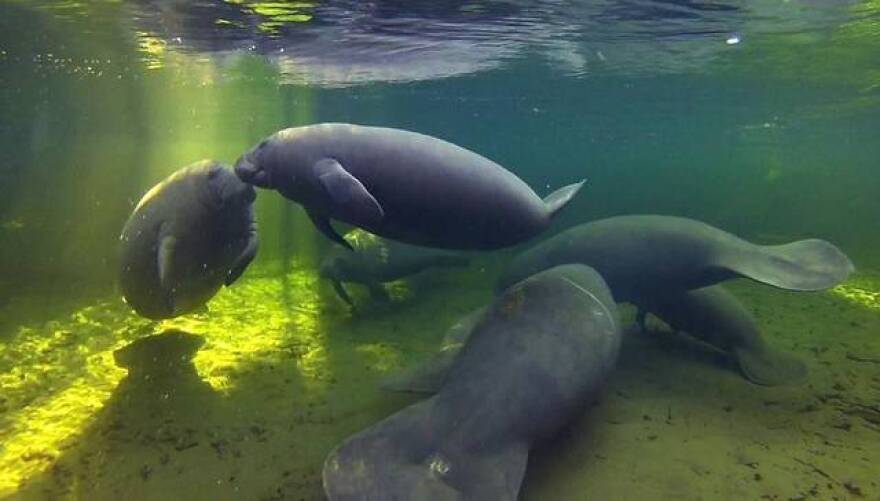Add manatee deaths to the list of bad things that happened in 2020.
Despite the COVID-19 shutdown that may have briefly given the lumbering sea cows a break from heavy boat traffic, deaths climbed to 619 last year, according to a preliminary tally from the Florida Fish and Wildlife Conservation Commission. That’s the second highest number in five years, behind 2018 when a lethal red tide blanketed the Gulf Coast and killed more than 200.
In these uncertain times, you can rely on WLRN to keep you current on local news and information. Your support is what keeps WLRN strong. Please become a member today. Donate now. Thank you.
“As soon as [people] realized that you could socially distance on the water, it swung the other way,” said Patrick Rose, an aquatic biologist and executive director of the Save the Manatee Club. “It went from a bit of a respite to almost literally an overkill.”
Because of the shutdown, necropsies were not performed on about a third of the dead manatees, Rose said. That left biologists to guess the cause of death. But he said they estimate boat strikes killed just over 100, in keeping with the number of boating deaths in recent years.
Rose said that suggests that other worrisome trends — poor water quality and loss of habitat — could be playing a role in increasing numbers.
“Boating is still a critically important factor for manatees, but sadly — and one that as an aquatic biologist and someone working in the field for about 50 years I really didn't think we were going to see — is the levels of concern for the habitat itself,” he said. “With all the red tide, brown tides, blue green algal blooms and just the problems that Florida is facing in terms of water quality and quantity, it's starting to have a very significant impact on loss of seagrass and and food resources for manatees.”

Manatees were removed from the endangered species list in 2017 and down-listed to "threatened" after federal wildlife managers concluded manatees were on the rebound.
But Rose said water quality played less of an issue in the past. That meant once no-wake zones and better boater education rules were put in place, manatees increased. He now worries space may be running out for them.
“We're now starting to see places like the Indian River Lagoon where manatees are having a hard time finding enough to eat,” he said. "There is a lot of actual permitting growth development within the areas that are important to manatees."
In addition to seagrass die-offs — Biscayne Bay has lost more than 21-square miles — Rose said manatees are losing warm water areas near coastal power plants and springs that they need to survive cold winters. Nearly two-thirds of the state’s manatees now winter around power plants.
But most utilities have begun switching to cleaner energy that produces less warm outfall water. Federal rules prevent the state from issuing permits that create new warm water refuges, but doesn’t address what to do with manatees that return to older plants year after year.
“That leaves us with the natural springs and other sort of passive warm water areas,” Rose said. “And in the future, if we haven't developed a plan to wean them off of those artificial plants and have enough natural habitat for them, the population will decline.”



